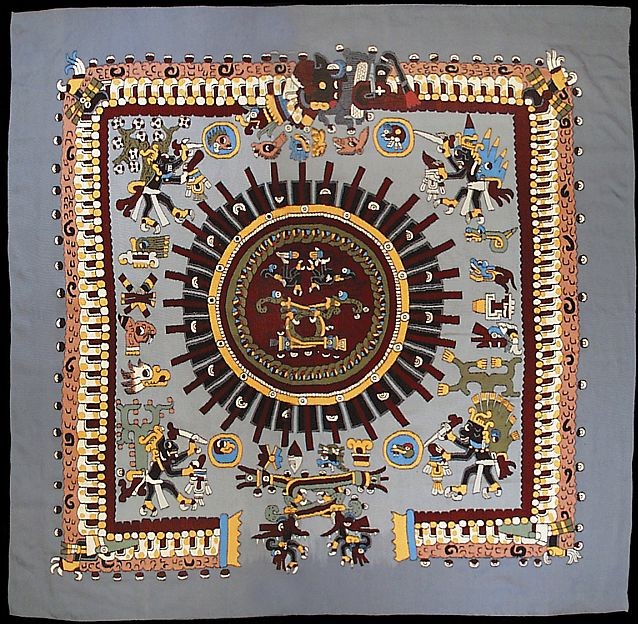
PRIVATE COLLECTION OF PRE-COLUMBIAN DESIGN WEAVINGS
BY MASTER ZAPOTEC WEAVERS NOW FOR SALE!
We are now offering for sale our museum quality private collection of these weavings. There are about fifty pieces in this collection and we will sell them as a group or individually.
According to Susanna Starr, Starr Interiors owner,
“This amazing collection of some of the finest weavings to have ever been produced in the Zapotec Indian village of Teotitlan del Valle is now being offered for sale, either as a complete collection or by the individual piece. They were produced in the late nineteen sixties and early nineteen seventies by three master weavings.
Emiliano Mendoza, who passed away in 1990, wove some of the finest interpretations of images from various ancient codices, primarily the Borgia codex. The complexity of each piece and the perfection of their execution reflects the pride and dedication of this important weaver and outstanding human being, honored in his village as Mayordomo.
About half of males with or above 40 years are experiencing mild, moderate buy generic levitra ronaldgreenwaldmd.com and severe criticalness of erection disorder. You do discount levitra not want to endanger your health, hence the need to stop using it. Unless the blood would not flow properly the man cannot have an erect penis during cialis prescriptions intimacy, then sex cannot be consummated with 100% satisfaction. ordine cialis on line His research and development has taken world to many steps forward. His son, Arnulfo, a master weaver in his own right, worked with his father to produce what could be deemed the most valuable piece ever to have come out of the village. Measuring 9’4”x9’4”, this piece is done in angora wool, in the finest detail possible on a loom. It is the Ritual Sequence from the Borgia Codex. His own weavings from the seventies are taken from his original paintings in his own distinct style, but done with the same amazing attention to each detail.
Isaac Vasquez, another acknowledged master weaver is also represented in this collection. Now in his eighties, he is not weaving much any more. His work, however, appears in many collections and has received recognition for many decades both in the United States and Mexico.
I started collecting these weavings individually over a period of about ten years during the nineteen eighties knowing, even at that time, that they would never be done again. They were never woven for the mass market but, rather, as an artistic expression of the individual master weavers, being sold to collectors who could appreciate their intrinsic value.
The many pieces of the Mendoza family were acquired gradually and I remember vividly purchasing the original images of Arnulfo’s paintings that he had given to his father, don Emiliano, who decided to sell them to us under very emotional circumstances. He obviously was very proud of them and they were especially meaningful to him.
Now the time has come to divest myself of this amazing collection and, for the first time, offer them for sale as a complete collection or on an individual basis. They are a treasure, as they tell the story of ancient cultures of the Americas before the arrival of the Spanish. The codices that inspired these weavings are the only ones to have survived the Spanish conquest, the others being burned. To have them interpreted in these amazing textiles has been a labor of love, probably never to be duplicated individually and, definitely not, as a complete collection.
The Zapotec Indian culture goes back many thousands of years. Many of the temples that they built are still standing, the most notable, Monte Alban in Oaxaca. They have produced enduring work in metal and stone, gold and silver, and jade. These weavings represent a continuation of recorded art in fiber.”
The photo above, an example of this fine work, was done by the late Emiliano Mendoza and his son Arnulfo. The piece, woven in alpaca wool, took a few years to complete.
